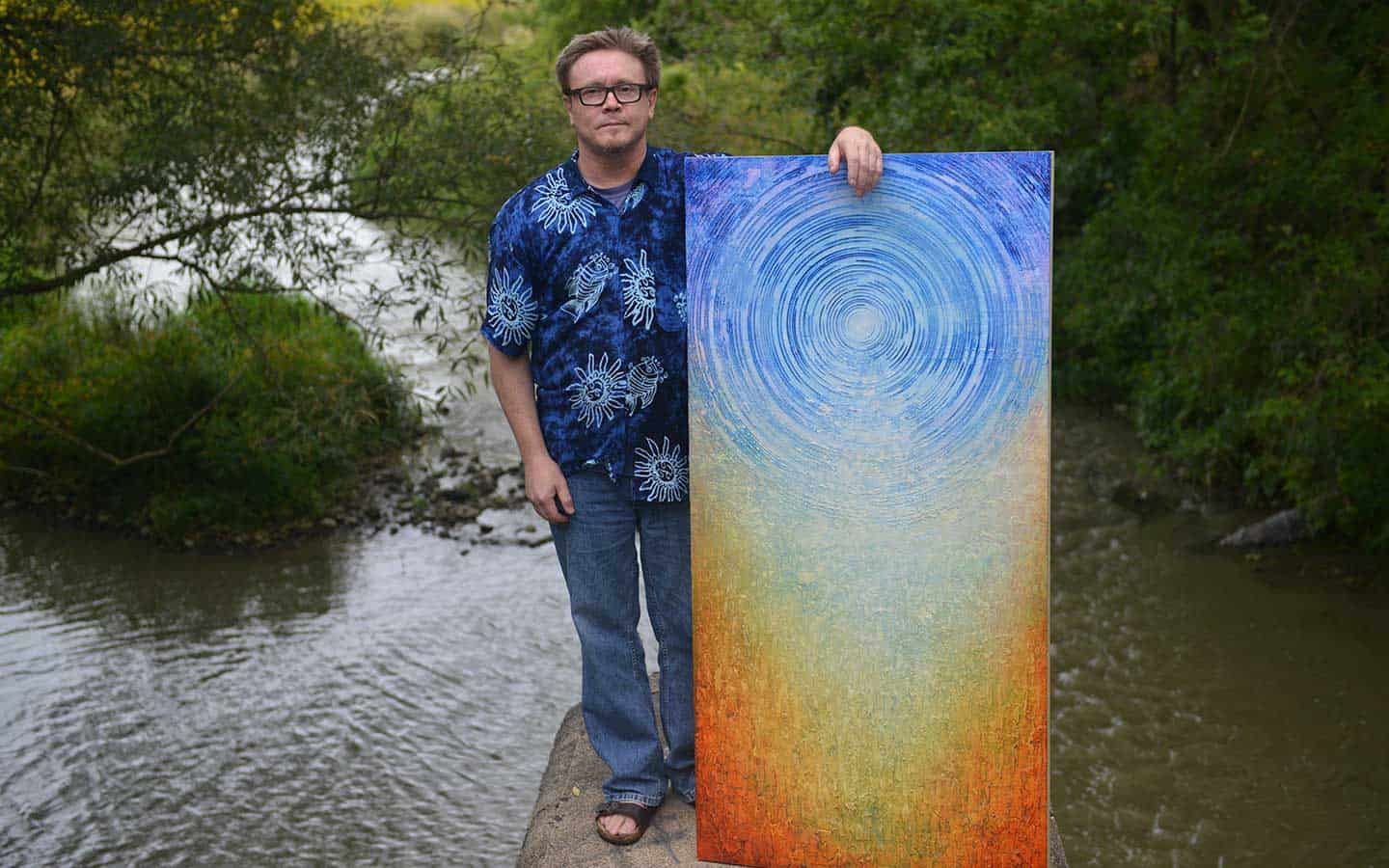An upcoming art exhibition in Kitchener aims to highlight the devastating effects caused by climate change using a variety of creative works.
“Resilience” at Homer Watson House & Gallery features artists Jim Blomfield, Symeon Van Donkelaar and Nik Harron, each one presenting their unique take on what is becoming an increasingly urgent issue through a series of paintings and photographs.
For instance, in Harron’s “Fiddling while the world burns” display, he vandalizes his own paintings in interesting ways to show the viewer the environmental destruction taking place at every moment, and the impact it has on our landscapes. His work takes his original acrylic paintings – and the viewers – into a whole new realm.
“I picked very recognizable issues with climate change: one of the pieces, I used a giant lens to burn a hole through it using sunlight to highlight issues of global warming,” explained Harron.
One of his works has a local spin, depicting a once-tranquil landscape of Snyder’s Flats in Woolwich Township. The inspiration for the destruction of this painting came from a concept in the book “The Once and Future World: Nature as it was, as it is, and as it could be” by Canadian author J.B. MacKinnon.
“Basically, from researching archival descriptions of the natural world, he concluded that there’s only ten per cent left [of nature]. Ten per cent of the large animals, ten per cent of fish in the ocean, ten per cent of the wild space,” said Harron.
“In depicting that, I took a lake scene at one of the water-filled mining pits at Snyder’s Flats. It’s a very textural painting originally, transformed by painting over 90 per cent of that with just black. So the texture remains, the image is visible, but it’s more of a memory of what was there.”
Blomfield’s display “Time-In, Time-Out” also features environmental destruction in the Waterloo Region, specifically deforestation at Laurel Creek in Waterloo.
More than 50 years ago, a 101-hectare section of forested land upstream from the Laurel Creek Reservoir was clear-cut and only stumps were left behind. Every fall since 1967, the dam is opened, and the reservoir is emptied to make room for the spring melt waters, exposing the stumps that have been submerged in water for over half a century.
“The sight of these stumps, hundreds of them, sunlit, standing stoically in a huge field of black soil, has intrigued me for years and inspired these two series of photographs,” writes Blomfield in his artist’s statement about the work.
“Time-Out” shows the exposed stumps time outside of the water, while “Time-In” portrays Blomfield’s interpretation of their time in the water. The work captures the surreal, dream-like beauty of nature that is still present despite man-made destruction.
Van Donkelaar’s inspiration, on the other hand, comes from landscapes all across Canada. For his display “Earth Colours of Canada,” he travelled all across the country collecting the dirt, rocks, shells, and occasionally bone fragments that he happened to find along his journey. The remnants are then ground up (if needed) and become the pigments for his works.
“The earth used to create the resulting pigments and artwork gives the land a role of necessary disclosure, inviting us to know it more fully through the experience of its colour,” said Van Donkelaar in his artist’s statement.
His display consists of large, gorgeous watercolour works showcasing the raw, natural colours found in the earth.
Resilience works will be on display from September 7 to October 13 at the Homer Watson House & Gallery in Kitchener. The opening reception takes place September 15 from 2-4 p.m. at 1754 Old Mill Rd. in Kitchener.









